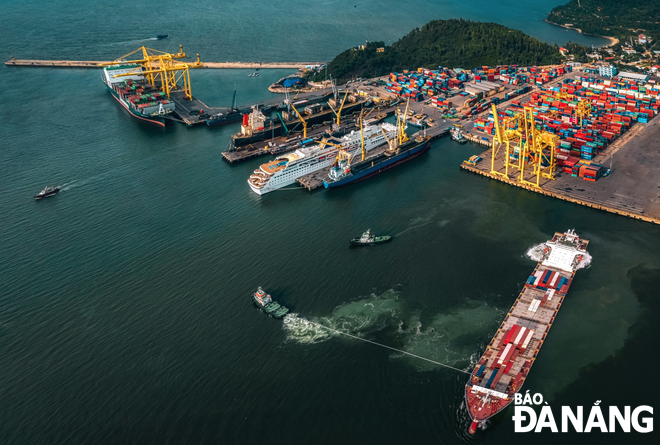Da Nang Port planned to be first-class national facility
Vietnamese Deputy Prime Minister Le Van Thanh has approved comprehensive master plan for Viet Nam's seaport system in the 2021-2030 period, with a vision to 2050.
 |
| Da Nang Port will be among the first largest port group in Viet Nam under the approved master plan for Viet Nams seaport system in the 2021-2030 period. In the photo: A stunning view from Da Nang’s Tien Sa Port. Photo: TRIEU TUNG |
By 2030, Viet Nam will develop a synchronous and modern seaport system with high quality services, meeting the country’s socio-economic development needs, ensuring national defense and security, maritime safety and environmental protection, improving the competitiveness of the country’s economy.
In addition, Vietnamese seaports will satisfy the demand for imports and exports, trading among nationwide localities, transit and transshipment of goods among regional countries as well as domestic and international passenger transportation.
The Vietnamese seaport system will be able to handle from 1,140 to 1,423 million tonnes (including from 38 to 47 million million TEUs of containerized cargo) and from 10.1 to 10.3 million cruise passengers.
Under the approved master plan, Viet Nam's seaport system will be classified into 3 grades. In detail, ports in Hai Phong and Ba Ria - Vung Tau will be planned to be special grade facilities while others in Quang Ninh, Thanh Hoa, Nghe An, Ha Tinh, Thua Thien Hue, Da Nang, Quang Nam, Quang Ngai, Binh Dinh, Khanh Hoa, Ho Chi Minh City, Dong Nai, Can Tho, Long An, Tra Vinh will be developed into the first-grade ones. In which, ports in Thanh Hoa, Da Nang and Khanh Hoa have potential to become special grade facilities. In addition, ports in 6 other Vietnamese localities will be planned to be the second grade and such facilities in 13 localities will become the third class.
The total development investment capital for Viet Nam’s seaport system by 2030 will reach about VND 313,000 billion and it will be sourced mainly from non-state budget, businesses and other legal capitals. State budget capital is used to develop public maritime infrastructure and key areas in a bid to attract foreign investment.
Reporting by TRIEU TUNG – Translating by H.L